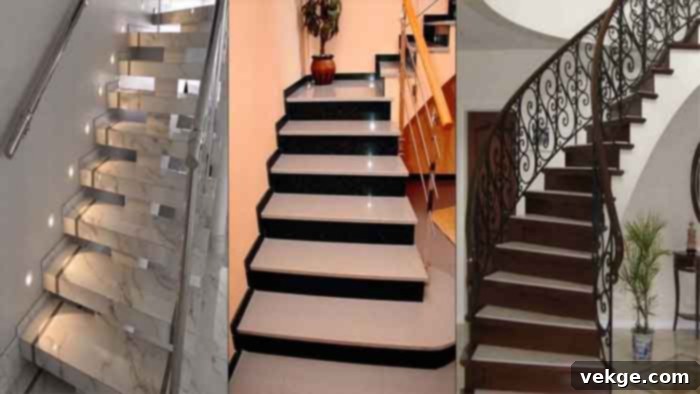Elevate Your Home: The Ultimate Guide to Stunning Staircase Designs and Decoration Ideas
Often overlooked, staircases are far more than mere functional elements connecting floors; they are the architectural arteries of your home, playing a pivotal role in its overall interior design. For too long, stairs have been taken for granted, relegated to a minor, utilitarian part of the living space. However, this perception is rapidly changing. Modern home design now places a significant emphasis on transforming staircases into captivating focal points, breathing new life and dimension into interiors with thoughtful design and decoration.
From sleek, minimalist structures to grand, sweeping designs, and innovative stairs with a turn, there’s an endless array of styles to explore. The right staircase can dramatically enhance your home’s aesthetic, reflecting your personal taste and adding a unique character. This comprehensive guide will delve into a variety of stunning staircase designs and explore creative decoration methods that will undoubtedly enthrall you and inspire your next home transformation.
Exploring 12 Diverse Staircase Types to Transform Your Home
Choosing the perfect staircase is a crucial decision that blends seamlessly with a homeowner’s style, available space, and budget. Ultimately, the chosen design will be a testament to the homeowner’s commitment to perfection in interior aesthetics. We’ve compiled a list of at least 12 significant types of staircases, including popular designs featuring turns, each offering unique beauty and functional advantages.
- Straight Staircase
- L-Shaped Staircase
- U-Shaped Staircase
- Curved Staircase
- Winder Stairs
- Spiral Staircase
- Circular Staircase
- Ladder Stairs
- Split Stairs
- Floating Stairs
- Organic Stairs
- Stairs with Integrated Storage
Let’s uncover the inspiration behind each design, tracing the interplay of beauty and functional engineering that makes every type of staircase a fascinating architectural marvel.
1. Straight Staircase
The straight staircase is defined by its unbending, linear flight, maintaining a consistent direction from top to bottom. This is arguably the most common and straightforward type of staircase to install. Its simple structure makes it easy to navigate, offering an accessible route for toddlers, the elderly, and those with mobility considerations, as it typically avoids steep inclines. Railings and handrails flow smoothly, enhancing safety. However, a key limitation is its significant linear footprint, which can consume considerable space and impact overall house design, particularly in smaller homes. While straightforward, the scope for intricate design tweaks and creative architectural expression can be more limited compared to other styles, often favoring a minimalist or traditional aesthetic.
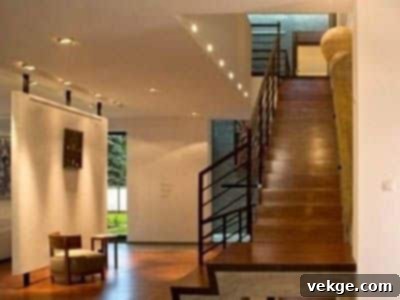
2. L-Shaped Staircase
The L-shaped staircase, often considered a dream for those seeking stairs with a turn, features a single bend, typically 90 degrees, either midway through the flight or closer to one end. This design is also known as a quarter-turn stair, characterized by a landing that provides a resting point. The L-shaped configuration is highly space-efficient, requiring less linear footprint than a straight staircase, making it ideal for corners or homes where space is at a premium. Its wider landing not only makes navigation easier and more comfortable but also significantly enhances safety by breaking up the flight, reducing the severity of a fall. Visually appealing and versatile, the L-shaped staircase adds dynamic interest to an interior without overwhelming the space.
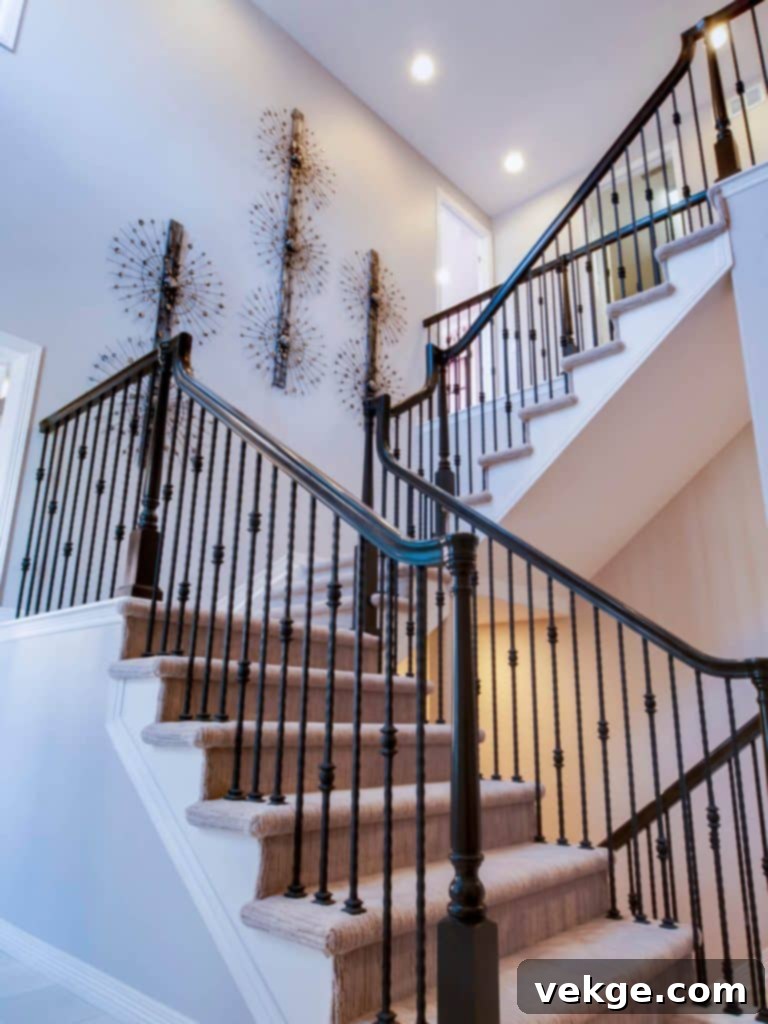
3. U-Shaped Staircase
Another classic example of stairs with a turn, the U-shaped staircase, also known as a half-turn or switchback stair, features two parallel flights connected by a 180-degree turn at a flat landing. This design is exceptionally easy to integrate into various floor plans, often fitting neatly into a square or rectangular space. The generous landing provides multiple natural resting points during ascent, significantly improving comfort and safety. U-shaped staircases are visually grand and offer a sense of formality, making them a popular choice for larger homes and entryways where they can create a striking architectural statement.
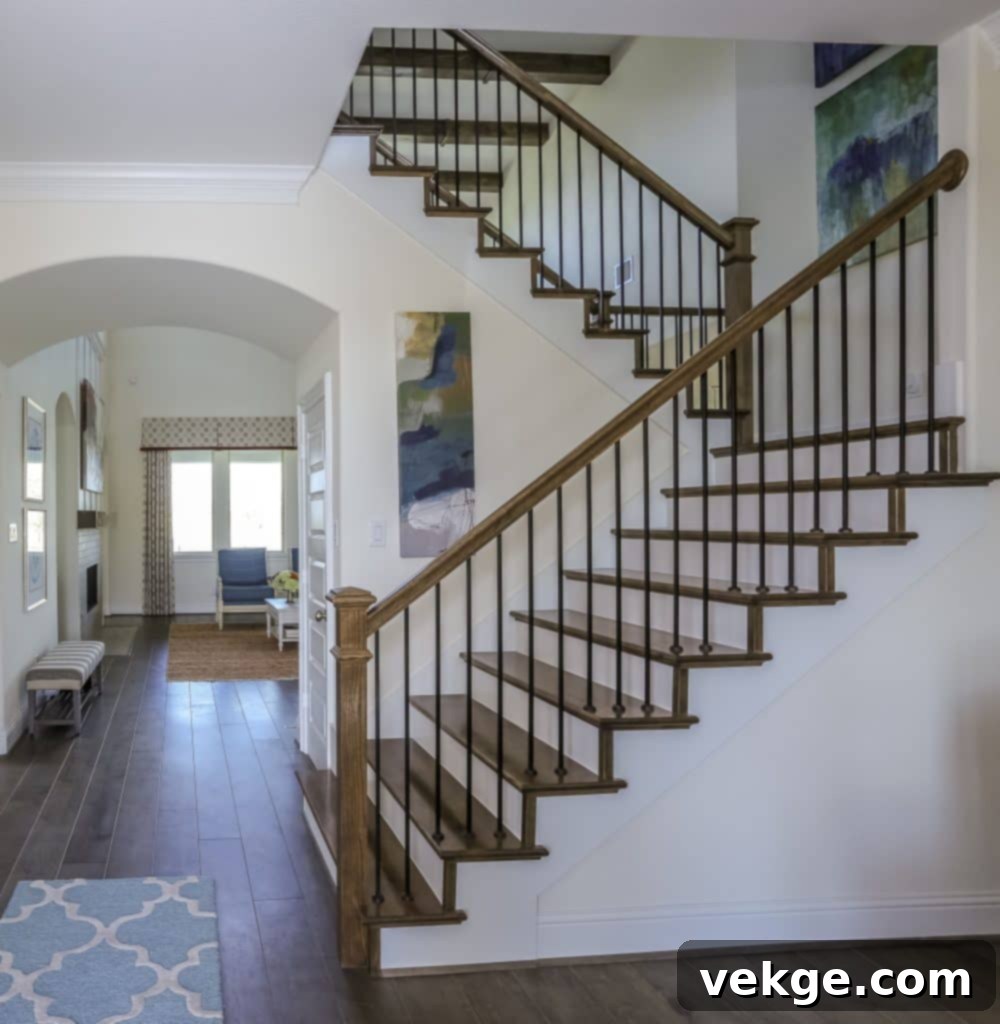
4. Curved Staircase
The curved staircase, renowned for its helical arc, offers an unparalleled sense of elegance and visual grandeur. Unlike spiral stairs, it does not form a full circle and typically has a larger radius, creating a sweeping, graceful ascent. Often positioned at the main entryway, a curved staircase makes an immediate and lasting impression, exuding sophistication. Thanks to its generous radius, it is generally easier and more comfortable to navigate than a spiral stair. However, its complex construction, requiring precise engineering and custom craftsmanship, makes it one of the most challenging and expensive types of staircases to build. The result, though, is an undeniable architectural masterpiece.
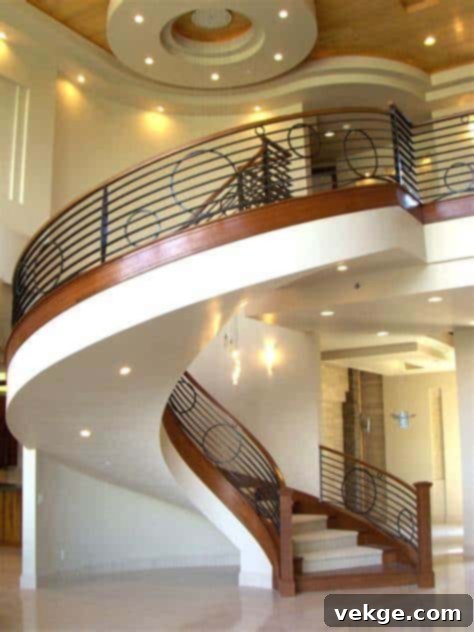
5. Ladder Stairs
Ladder staircases are characterized by their steep angle and minimal footprint, designed to maximize space efficiency. In residential settings, they are commonly used as secondary access points to areas like lofts, attics, basements, or compact kitchens, where primary access is not required by building codes. Their compact nature makes them indispensable for tight spaces, library access, or even docks. It’s crucial to note that due to their steepness and less conventional design, ladder stairs are generally not permitted as the primary means of access in most building codes, emphasizing their role in specific, space-constrained applications.
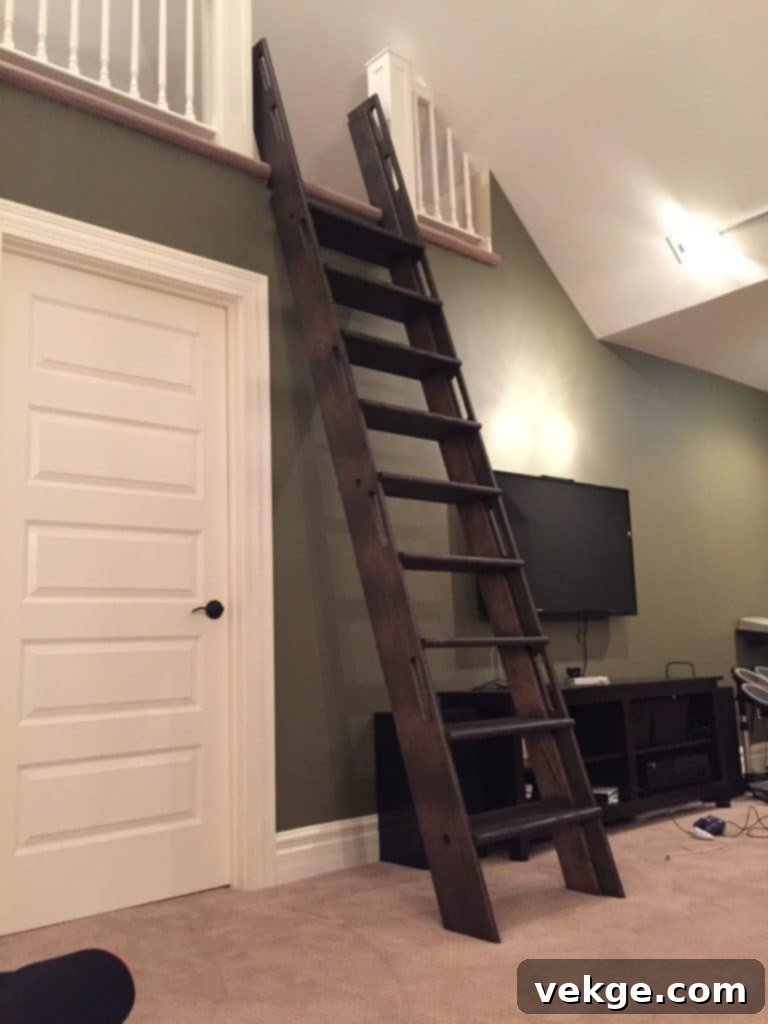
6. Winder Stairs
Winder stairs are a clever variation of the L-shaped staircase, distinguished by a series of pie-shaped, triangular steps that replace a traditional landing at the corner. These winding steps, often used in conjunction with balustrades instead of straight rails, allow for a seamless transition around the turn without requiring a separate landing. They are excellent space-savers, taking up considerably less floor area than other stair types, which made them prominent in older homes and continue to make them popular in modern designs where efficiency is key. Winder staircases are frequently employed as secondary stairs, providing an elegant and fluid connection between levels while maintaining an open, continuous feel.
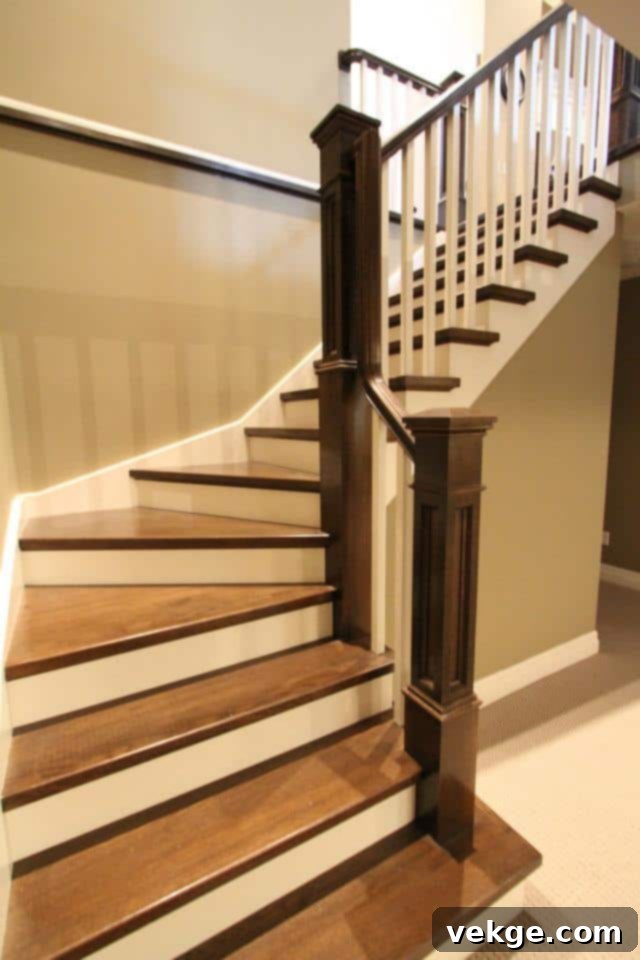
7. Spiral Staircase
A true icon of compact design, the spiral staircase features individual steps or treads that radiate from and attach to a central vertical column, forming a perfect circle. As you ascend or descend, the steps rotate around this central point, creating a dramatic, helical pathway. A defining characteristic is that all steps have an equal depth, ensuring a consistent climb. Handrails typically follow the perimeter of the spiral curve, providing support and enhancing its iconic appearance. While incredibly space-efficient and visually striking, spiral staircases can be challenging to navigate, especially when carrying large items, and may not be suitable for primary access in all homes.
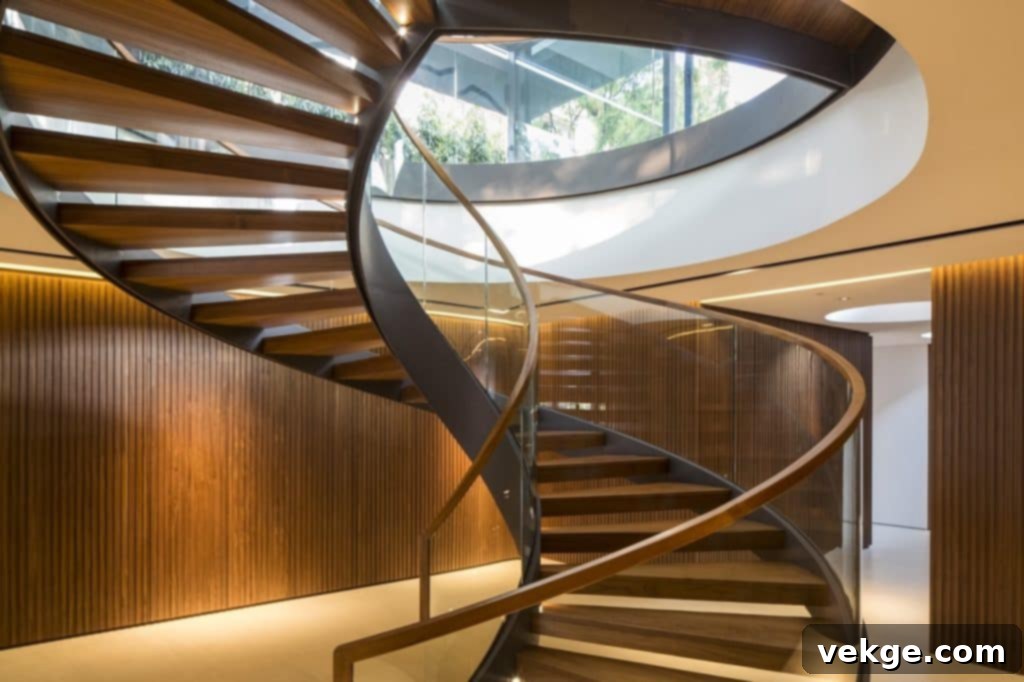
8. Circular Staircase
Often confused with spiral stairs, the circular staircase (also known as helix stairs) presents a distinct design. While it also curves and appears tapered, it crucially lacks a central column. Instead, its open middle provides support for an inner stringer to wind in a helical manner. This structural difference makes circular staircases generally easier and more comfortable to navigate than their spiral counterparts, often featuring a wider tread at the inner edge. When framed by glass or elegant railings, a circular staircase looks brilliant and adds a sophisticated, flowing aesthetic to any space. It offers the elegance of a curve without the confined feel of a traditional spiral, making it an excellent choice for grander entryways.
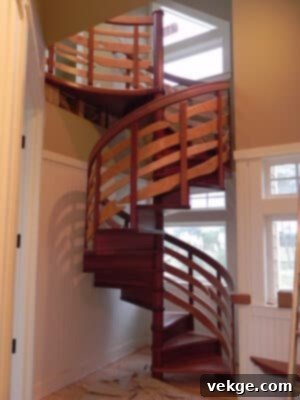
9. Split Stairs
Split stairs, or bifurcated stairs, are designed for grand entries and dramatic architectural statements. They begin as a single, wide flight at the bottom and then gracefully divide at a spacious landing, splitting into two separate flights that ascend in opposite directions to the upper level. This configuration provides convenient access to different sections of the upper floor from a central point. Typically found in larger homes, luxury residences, and commercial buildings, split stairs demand a sizable amount of space but deliver an unparalleled sense of grandeur and formality. They serve as an impressive focal point, suitable for both interior and exterior applications where a powerful design statement is desired.
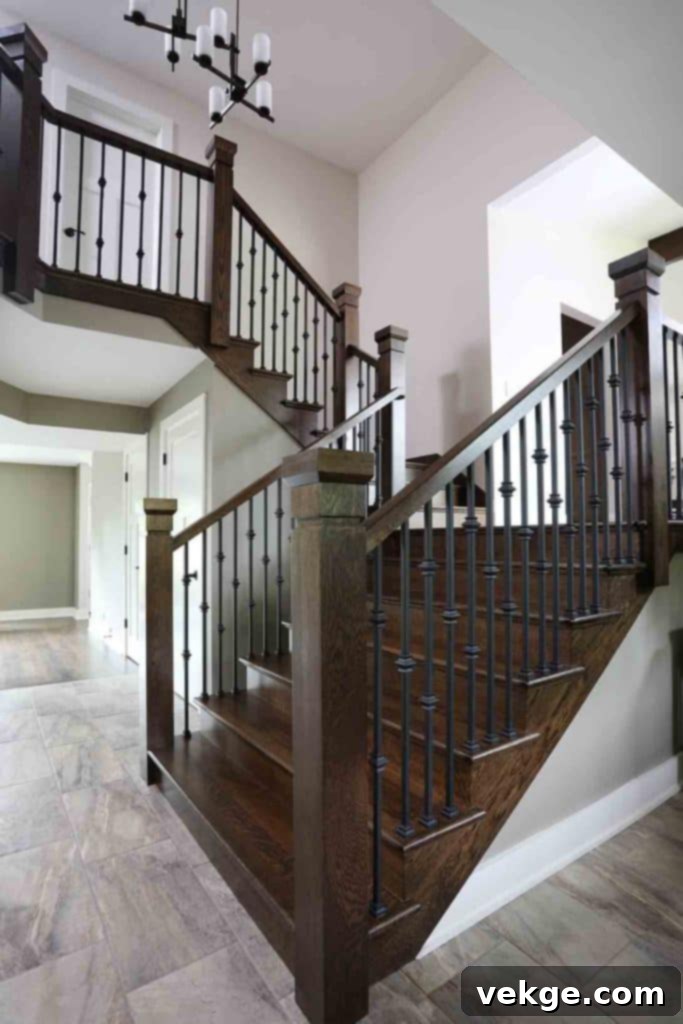
10. Floating Stairs
Floating stairs are a hallmark of modern and minimalist design, creating an illusion of treads suspended in mid-air without visible support or a solid foundation. The secret behind their seemingly gravity-defying appearance lies in clever structural engineering, often relying on a robust, load-bearing structural wall to cantilever each step. Cantilever floating stairs, where individual steps extend directly from the wall, are particularly popular for their clean, elegant lines and uncluttered aesthetic. This design choice imparts a sense of lightness and openness, making a space feel larger and more contemporary. Building a floating staircase requires careful planning and structural assessment to ensure safety and stability.

11. Organic Stairs
Organic stairs are a true testament to bespoke design, drawing inspiration from naturally grown forms such as the human spine, tree trunks, or twisting plant structures. These unique staircases eschew conventional straight lines and rigid angles, embracing fluid curves, irregular shapes, and natural textures. Designing and constructing an organic staircase is an incredibly challenging endeavor for both the architect and the builder, often requiring highly skilled craftsmanship and innovative materials. The result, however, is an unparalleled artistic expression that integrates seamlessly with nature-inspired interiors, creating a one-of-a-kind focal point that blurs the lines between architecture and sculpture.
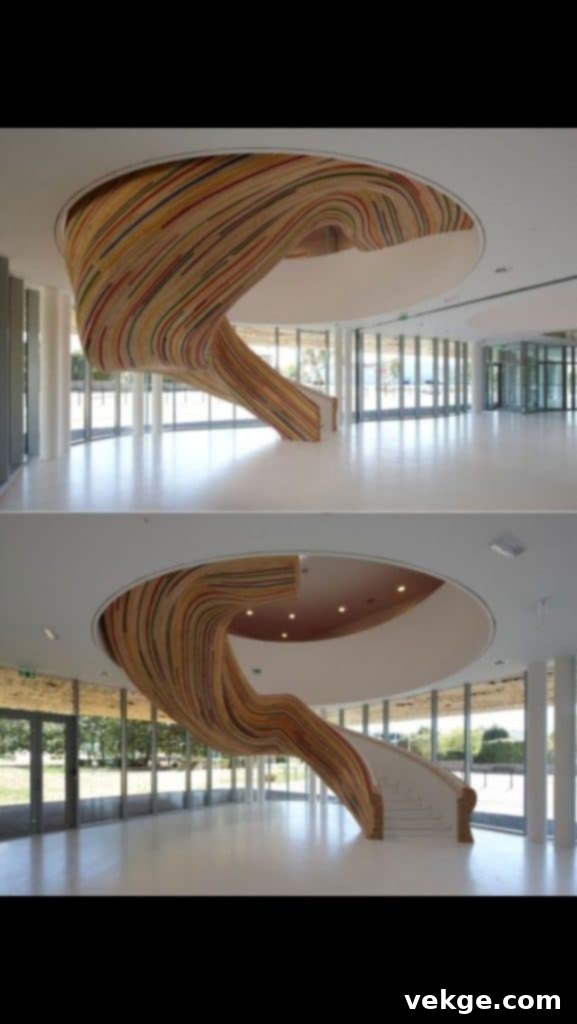
12. Stairs with Integrated Storage
For homes where every inch counts, stairs with integrated storage offer a highly practical and clever solution. These staircases are designed with cupboards, drawers, or shelving built directly into the risers, treads, or the space beneath the flight, appearing as a single, cohesive piece of furniture. Utilizing high-quality materials and meticulous fittings, these designs transform what would otherwise be dead space into valuable storage for books, shoes, seasonal decor, or household essentials. This innovative approach maximizes functionality without compromising on style, making them an excellent choice for compact living spaces or anyone looking to enhance organization within their home.
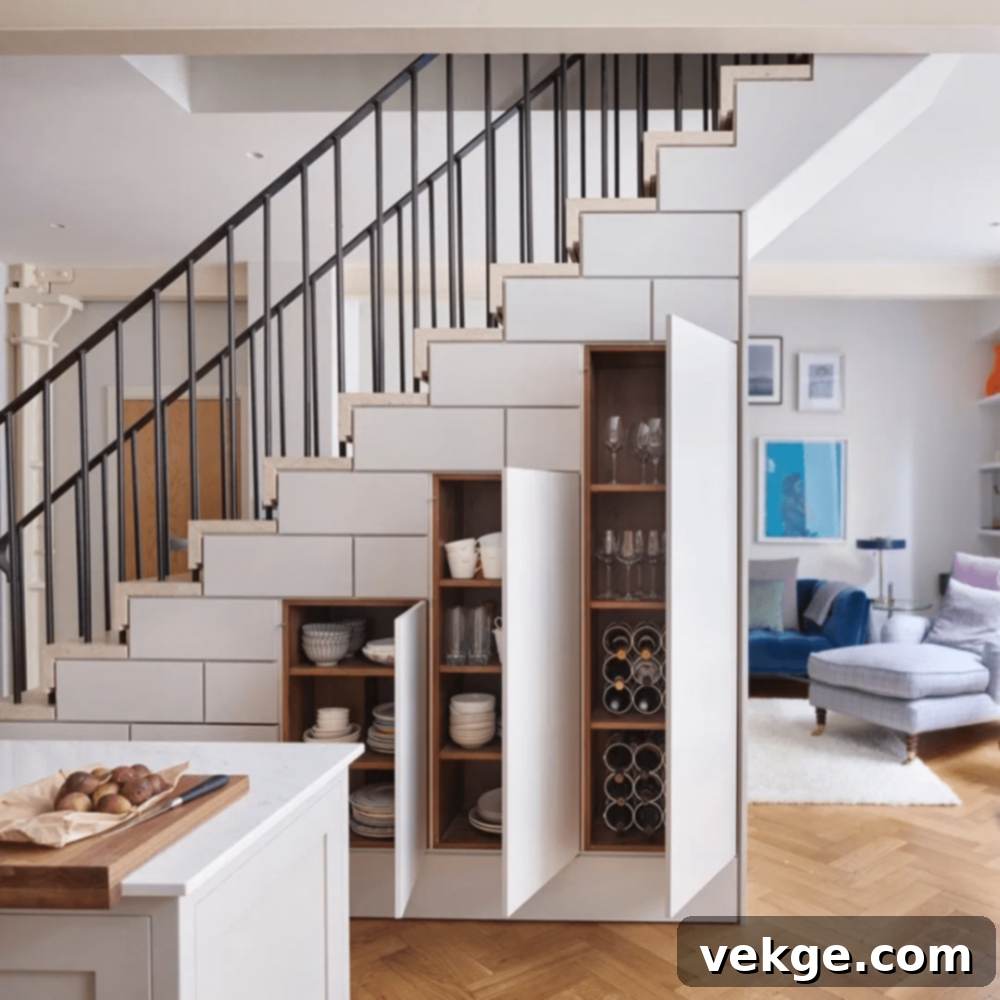
Just as a Stair Master strengthens muscles, the right choice of stairs and thoughtful stair decoration can significantly enhance the happiness and functionality of your family’s living space. Choosing the perfect staircase from such a diverse array of designs, including intricate stairs with a turn, can indeed feel daunting. However, by focusing on the guiding principles of aesthetics, comfort, style, and a desire to elevate your home decor, you can confidently make a selection that moves you towards a higher level of living. The latest trends favor head-turning designs that are unique, creative, and place a strong emphasis on functionality, ultimately adding a new dimension to your home’s interiors.
The Art of Staircase Decoration: Elevating Your Home’s Aesthetic
Beyond their structural form, staircases offer a blank canvas for decorative expression, transforming them from mere pathways into dazzling design statements. Thoughtful staircase decor ideas can significantly enhance your home’s ambiance, but it’s crucial to balance aesthetics with practicality. When planning your decorating strategy, always prioritize safety by avoiding items that could cause tripping hazards. Ease of cleaning and maintenance for any decorative features should also be a key consideration. Moreover, your decor choices should comfortably fit within your budget, proving that stunning design doesn’t always require excessive expense. Let’s explore some trendy and impactful ideas to find what perfectly aligns with your decor ambitions.
- Contemporary Decor
- Adhesive Tiles
- Fancy Railings
- Creative Lighting
- Luxury Embellishments
- Minimalist Accents
- Mirror Applications
- Modern Flair
- Artistic Painting
- Natural Plants
Contemporary Decor
Contemporary interior design on stairs embraces a “less is more” philosophy, emphasizing clean lines, open spaces, and often a preference for neutral or mono-tonal color palettes. However, this doesn’t preclude a bold pop of color on a staircase wall to create a striking accent. Among popular contemporary decor options, metal wall art or abstract panels on the staircase wall can introduce texture and visual interest. Mirrored surfaces or sleek, reflective finishes also align perfectly with contemporary aesthetic tastes, adding light and a sense of expansiveness. The key is to maintain simplicity and sophistication, allowing the inherent design of the staircase and carefully chosen accents to shine.
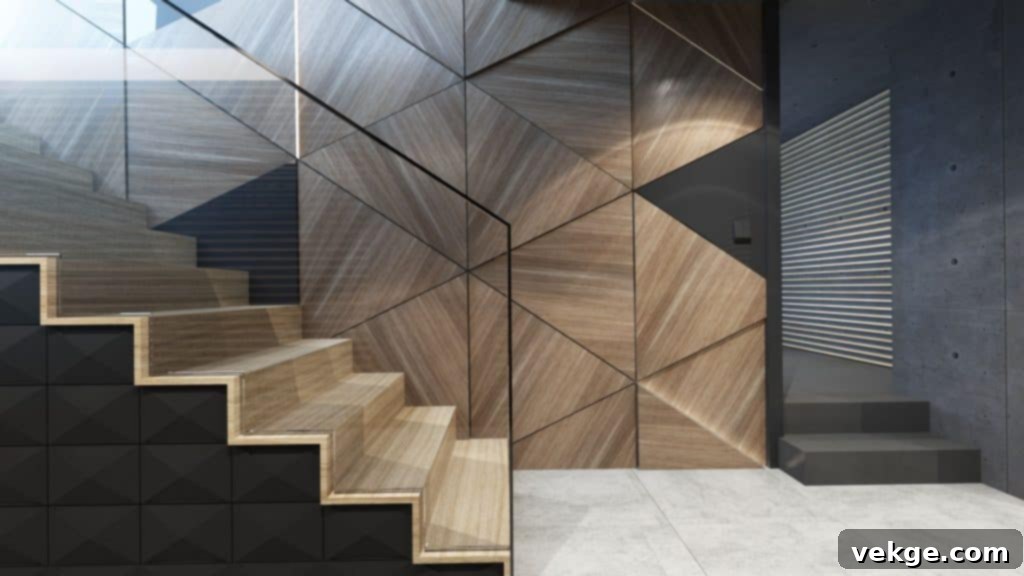
Fancy Railings
One of the most impactful ways to update your staircase design is by upgrading outdated stair railings. Replacing plain wooden banisters and balusters with intricately wrought iron railings, modern glass panels, or sleek wire railings can instantly elevate the entire space. Imagine the elegance of wooden balusters paired with ornate ironwork, creating an unparalleled sense of sophistication and craftsmanship that transforms straight, curved, or spiral staircases. Alternatively, frosted acrylic panels or stainless steel cable railings offer a contemporary, industrial chic aesthetic that infuses an unlimited dramatic ambiance into your entryway, making a powerful design statement that is both stylish and secure.
Creative Lighting
Staircase lighting serves a dual purpose: it’s a critical safety feature and an exceptional decorative element. Beyond mere illumination, you can make your staircase truly stylish. Consider hanging a dramatic chandelier above your stairs to create an instant focal point, or line up a series of descending pendant lights for a cascading effect. Installing wall sconces on the stair wall provides lively, ambient lighting, while adding subtle string lights along the railing can offer extra light and a touch of whimsy. For a classic touch, vintage bronze wall sconces can add warmth and character, perfectly blending functionality with aesthetic appeal.
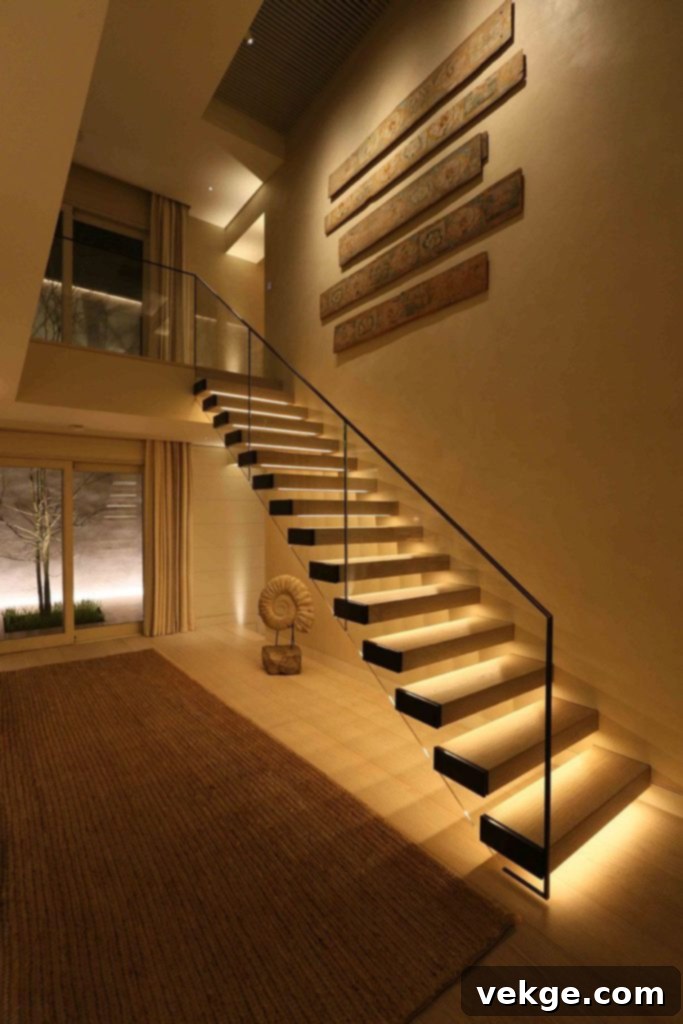
Luxury Embellishments
A luxury staircase is defined by its use of exquisite materials, intricate detailing, and opulent finishes that resonate with the rest of a high-end home. Incorporate fine woods, polished marble, granite, or other natural stone finishes for treads, risers, and landings. To achieve a truly luxe touch, suspend a grand chandelier or strategically place artistic pendant lights that draw the eye upwards. Additional lighting from elegant wall sconces and subtle step-level lights can illuminate each stair, highlighting textures and guiding the way. Completing the look, a fascinating Turkish or Persian carpet stair runner not only boosts the entryway’s beauty with rich patterns and colors but also provides a layer of comfort and guards against slips and falls.
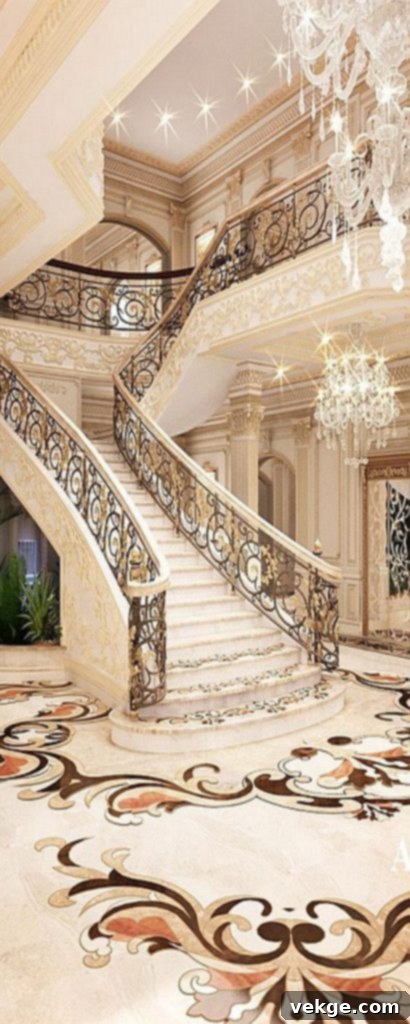
Minimalist Accents
Minimalist decor for staircases champions simplicity, functionality, and uncluttered aesthetics. This style often involves painting the staircase wall in a contrasting color to highlight its architectural form, or opting for a monochromatic scheme to create a serene backdrop. Instead of numerous small items, a well-chosen, single piece of art, such as a large painting centered on a stair landing, can make a powerful statement in a minimalist interior setup. Alternatively, hanging a thoughtfully curated row of line drawings or abstract prints can add visual interest without introducing clutter. The core principle is to keep the design refined and purposeful, allowing negative space to enhance the overall impact.
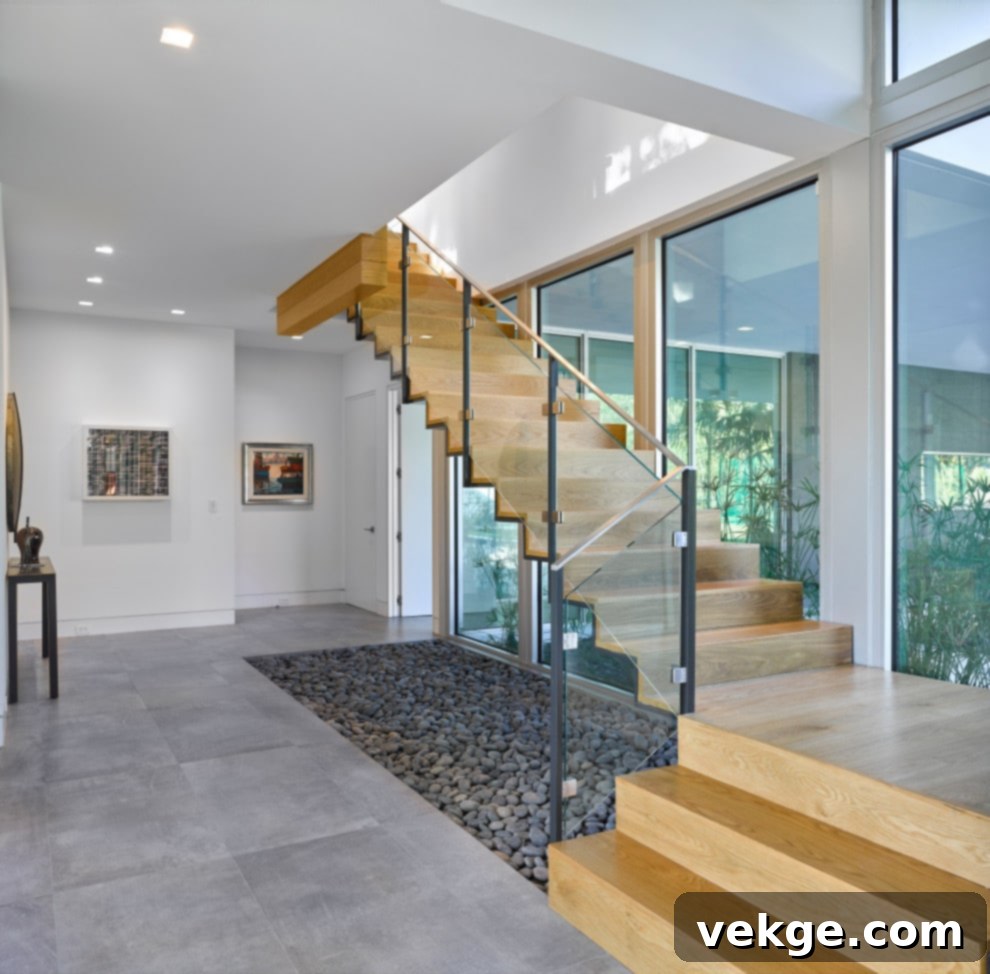
Mirror Applications
Integrating mirrors into staircase decoration is a brilliant strategy to enhance light, create an illusion of greater space, and offer a practical spot for a quick self-check. You can utilize mirrors with elegant frames or opt for mirrored tiles to reflect natural and artificial light, brightening what might otherwise be a dark stairwell. Intersperse small, framed mirrors among other art pieces on a gallery wall alongside the staircase. This technique adds dynamic sparks of reflected light and effectively expands the perceived lighting on the risers and landings. Large, strategically placed mirrors can visually double the width of a narrow staircase, making it feel more open and grand.
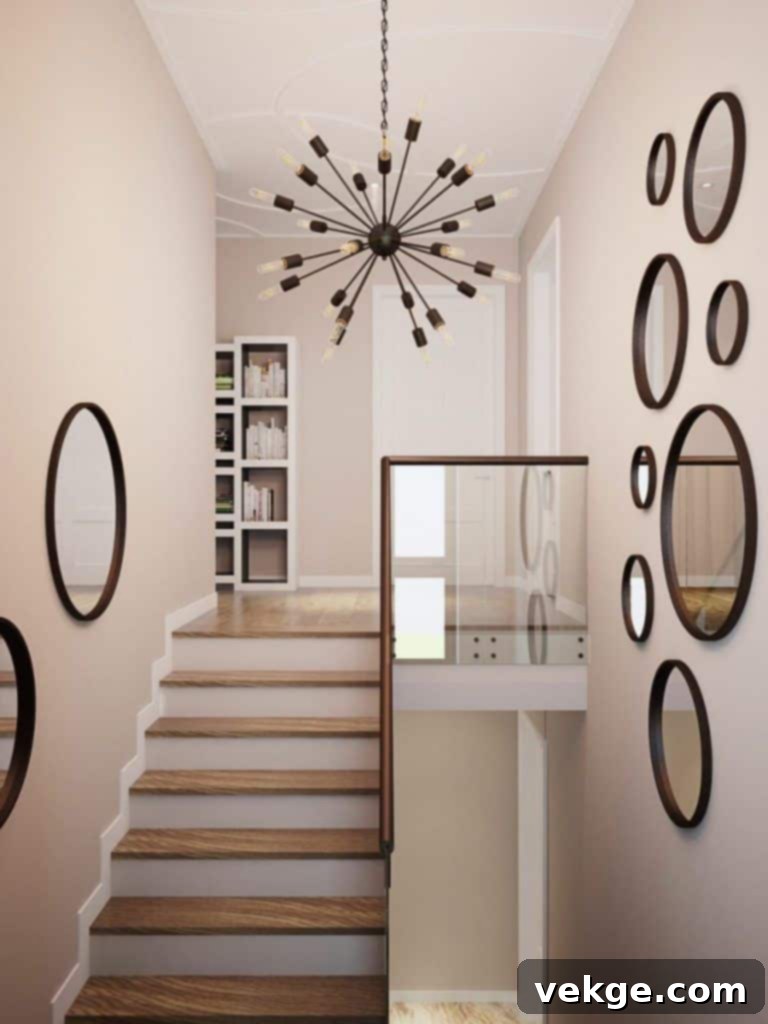
Modern Flair
Modern staircase decor emphasizes the use of natural and industrial elements such as metal, wood, and stone, often in sleek, unadorned forms. The focus is on clean lines, functionality, and innovative design that enhances visual impact without excessive ornamentation. For instance, transforming a traditional staircase into a modern marvel might involve replacing ornate balusters with minimalist metal handrails and transparent glass panels, giving a floating or open-tread stair an incredibly fresh and contemporary appeal. This approach seeks to simplify, allowing the inherent beauty of the materials and the architectural form of the staircase to stand out as a central design feature, captivating onlookers with its refined simplicity.
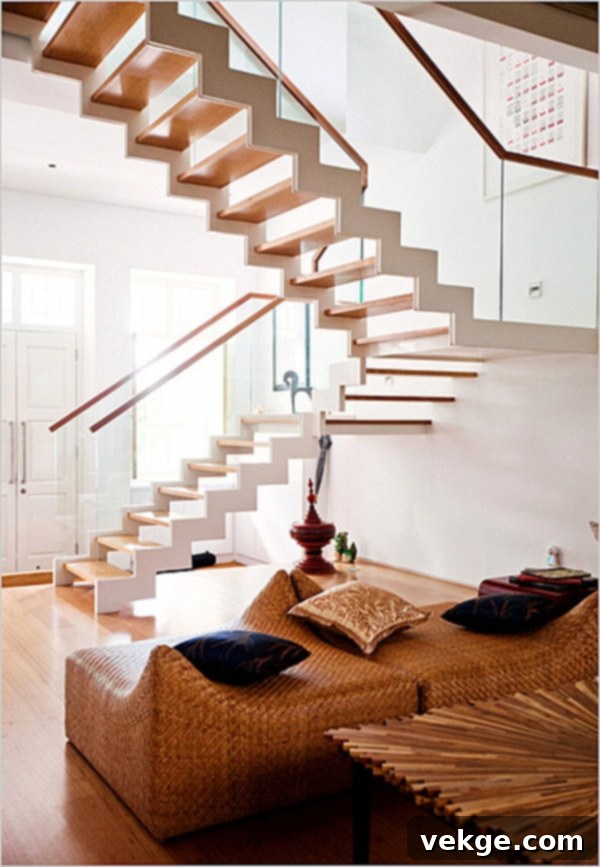
Natural Plants
Incorporating plants into your staircase decor brings a touch of nature and vibrancy indoors. Just like a versatile Christmas tree, a faux boxwood garland can adorn your banister year-round. Start with a neutral green garland and then personalize it for each season: add cheerful flowers in springtime, seashells for summer, tiny pine cones for fall, and festive ornaments for winter. For solid walls adjacent to the staircase, consider hanging wall planters with trailing vines or succulents to create a vertical garden effect. Small potted plants can be placed on floating shelves or strategically along the stair surface by the railing, while larger plants or elegant floor vases can beautifully anchor stair landings, adding varied textures and natural charm to the space.
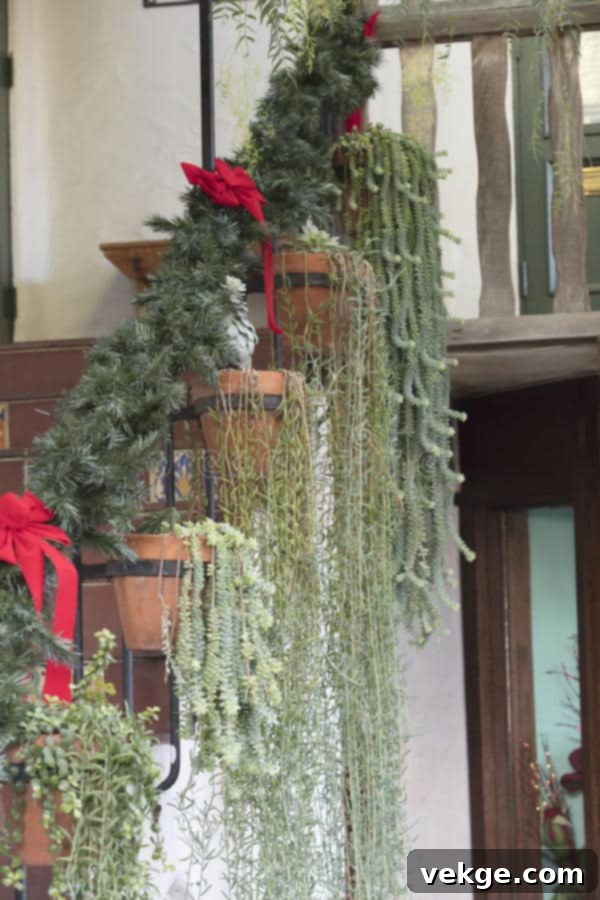
Artistic Painting
The staircase wall offers a prominent canvas for showcasing your favorite artwork and personal style. Whether you opt for one or two grand paintings or create an entire gallery wall along the ascent, this space can become a personal exhibition. While original paintings can be a significant investment, high-quality online replica prints of beloved masterpieces offer an affordable way to admire and honor your favorite artists, from Van Gogh to Monet. To truly enhance the display and set a sophisticated mood, install dedicated gallery lights to illuminate the paintings at night. This not only highlights the artwork but also serves as a fantastic mood enhancer, transforming your staircase into a curated art walk.

Adhesive Wall Stickers & Tiles
Self-adhesive wall stickers and tile decals are incredibly affordable and user-friendly tools for transforming your staircase risers. These innovative decor solutions come in a vast array of styles, from vibrant Talavera Spanish-Bohemian patterns to elegant geometric designs. Typically sized around 40 inches in width and 7 inches in height, they are designed to fit most standard risers. Their self-adhesive backing means no special skills or tools are required for application, making them a perfect DIY project. This allows homeowners to easily introduce color, pattern, and personality to their stairs, creating a dramatic visual impact without the commitment or cost of traditional tiling.

We’ve journeyed through a wide gamut of trending staircase types and inspiring decoration ideas. By thoughtfully selecting some of these best practices, you can embark on a comprehensive makeover, enhancing not only your home’s structural elements but also its overall interior charm. Whether it’s choosing a striking new staircase design, including the versatile stairs with a turn, or simply refreshing your existing one with creative decor, these updates promise to elevate your living space and delight all who enter.
